Specifying zebra blinds without a deep understanding of fabric can lead to project failure. You risk budget overruns, poor performance, and client dissatisfaction when the chosen material doesn't meet commercial demands.
The fabric is the most critical component. Its material composition (polyester vs. vinyl-coated[^1]), weave density, and protective coatings directly determine the blind's durability, flame resistance, cleanability, and UV stability. These factors are the primary drivers of both long-term performance and upfront cost.
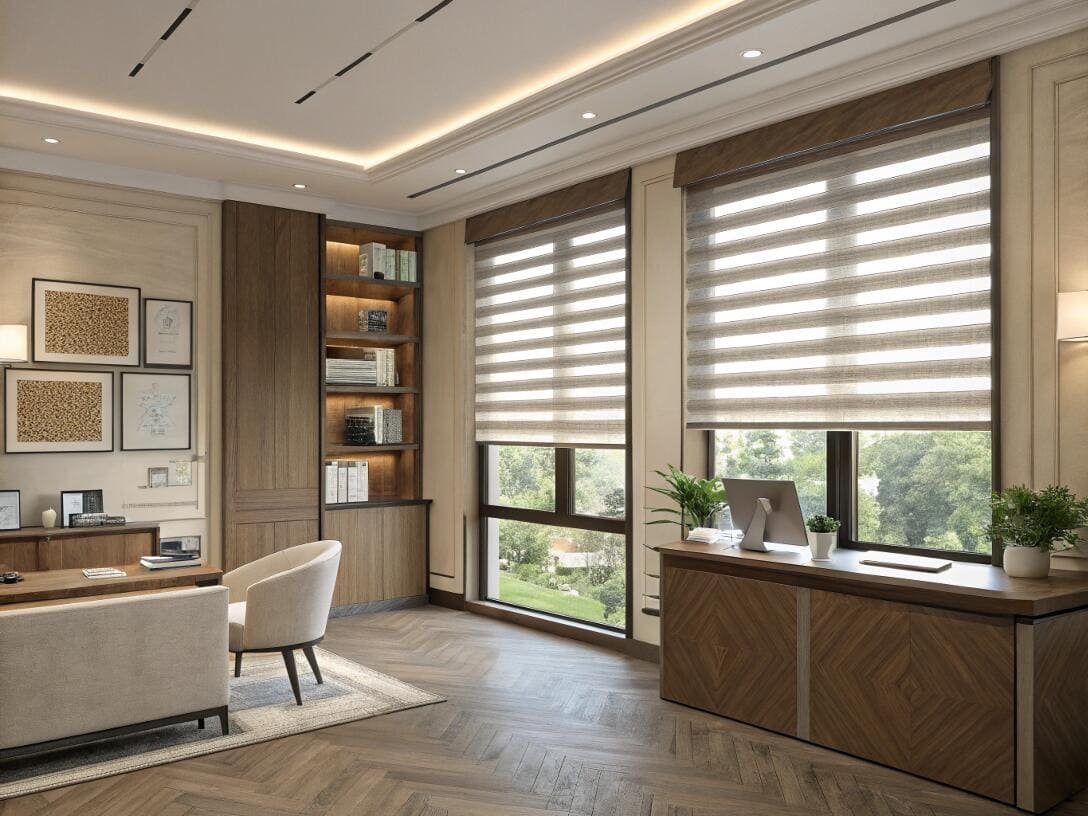
For every project, the fabric selection process[^2] is where value is either created or lost. A cheap fabric may look good on day one, but it will quickly fray, yellow, and become a maintenance nightmare in a high-traffic commercial setting. As a supplier who helps contractors source materials for demanding projects worldwide, I've seen the consequences of poor fabric choices. This guide will walk you through the technical specifications and cost implications, empowering you to select the right material that delivers lasting value for your clients.
What Material Are Zebra Blinds Made Of and How Does It Affect Performance?
Project buyers often see "100% polyester" and assume all fabrics are the same. This oversimplification leads to specifying materials that aren't suited for the environment's specific needs.
Zebra blind fabrics are primarily made from polyester due to its excellent color fastness and soft, textile-like feel. For demanding commercial applications, this polyester is often coated with PVC or treated to enhance durability, cleanability, and flame resistance, directly impacting performance.
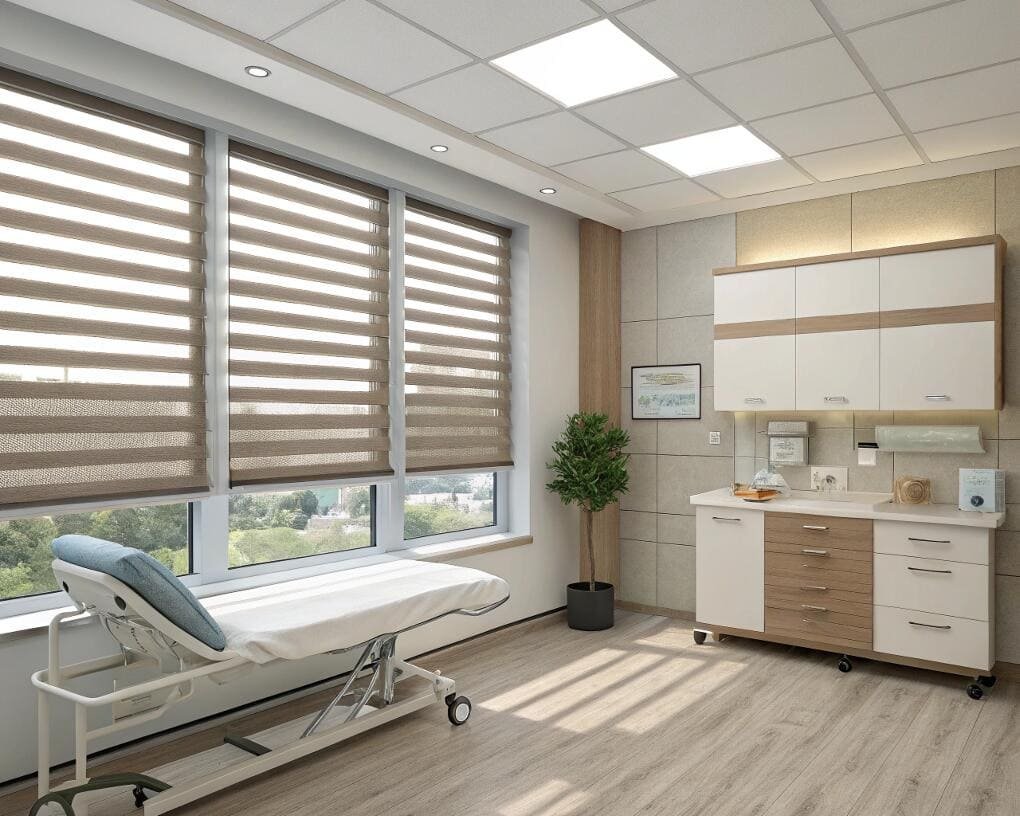
The choice between a standard polyester and a performance-coated fabric[^3] is one of the first decisions you'll make. The "better" option depends entirely on the application. For a corporate boardroom, a premium woven polyester offers an unmatched aesthetic. For a busy cafe or healthcare facility, the durability and wipe-clean surface of a PVC-coated fabric are non-negotiable. It's a balance of aesthetics, durability, and safety compliance.
Polyester vs. PVC-Coated Polyester
- 100% Polyester: This is the most common material. High-quality polyester fabrics offer a rich, woven texture and a vast range of colors and opacities. They drape beautifully and provide a softer, more residential feel that is popular in modern office design. Their primary vulnerability in commercial settings is susceptibility to dirt and lower durability if not of a high-grade weave.
- PVC-Coated Polyester: In this construction, a polyester base scrim is coated with a layer of PVC (polyvinyl chloride). This process creates a highly durable, non-porous surface that is incredibly easy to clean, dimensionally stable, and often inherently flame retardant. The trade-off can be a stiffer handle and a more "commercial" or technical appearance.
Here's a comparison I use to guide my clients:
| Performance Metric | Standard Polyester | PVC-Coated Polyester | Best Application |
|---|---|---|---|
| Aesthetics | Soft, woven, high-end residential feel | Technical, clean, smooth surface | Polyester for executive offices, lounges. |
| Durability | Good (dependent on weave density) | Excellent (resists abrasion, stains, and moisture) | PVC-coated for lobbies, retail, healthcare. |
| Cleanability | Requires vacuuming/spot cleaning | Wipeable with mild soap and water | PVC-coated for high-traffic or messy areas. |
| Flame Resistance (NFPA 701) | Must be chemically treated | Often inherently flame retardant | PVC-coated is often easier to specify for compliance. |
| Cost | Generally lower | Generally higher | Budget-driven vs. performance-driven projects. |
What Is the Difference Between Cheap and Expensive Blinds in Terms of Fabric Quality?
Why does one zebra blind cost $100 while another, seemingly identical one, costs $500? Many buyers suspect it's just brand markup, but the real difference lies in the unseen quality of the fabric.
Expensive blinds use fabrics with higher-density weaves, advanced UV-inhibiting and anti-static coatings, and certified flame retardancy. Cheap blinds cut corners on these features, leading to fraying, discoloration, and a shorter lifespan that costs more in the long run.
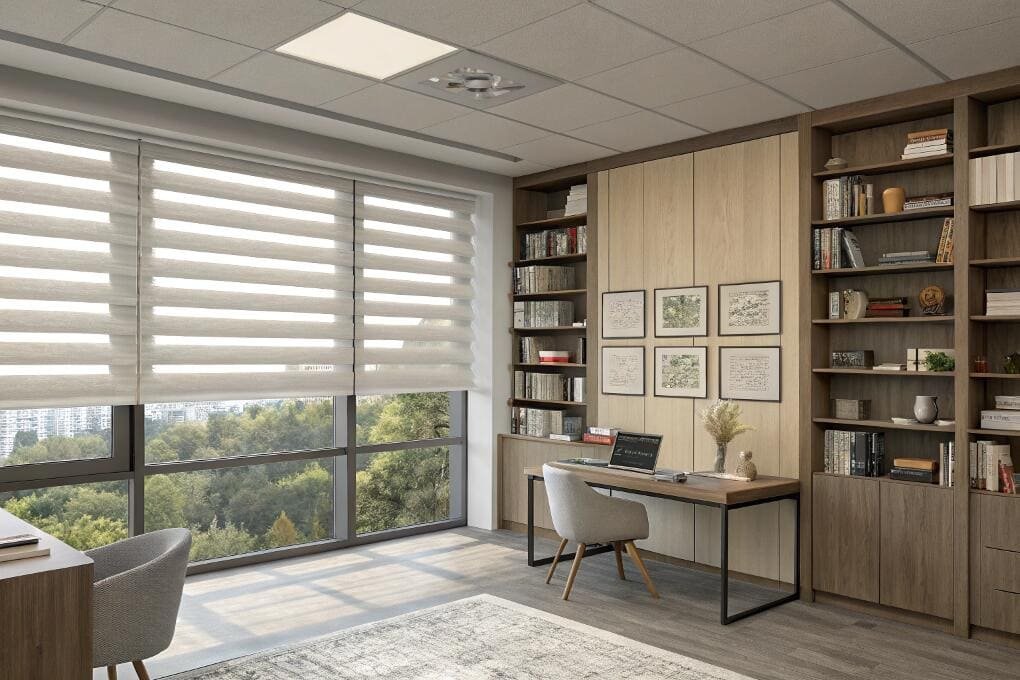
The true cost of a blind is not its purchase price but its total cost of ownership[^4]. A premium fabric might cost more upfront, but it will withstand daily use, resist fading from sunlight, and meet critical safety codes for a decade or more. A cheap fabric may fail in two years, requiring a full replacement that negates any initial savings. I always stress to my clients that investing in fabric quality is investing in the longevity and safety of the asset.
Key Fabric Quality Differentiators
- Weave Density and Yarn Stability: Inexpensive fabrics use thinner yarns and a looser weave. This makes them prone to stretching, warping, and creating a "smile" effect at the bottom. More importantly, the cut edges of the stripes will fray easily. Premium fabrics use high-density, dimensionally stable yarns that are often heat-set to ensure they hang perfectly straight and resist fraying.
- Coatings and Finishing: This is a major hidden cost driver.
- UV Inhibitors: Prevent the fabric from yellowing or becoming brittle when exposed to sunlight.
- Anti-Static Finishing: Actively repels dust, a significant advantage for zebra blinds, which can be difficult to clean between the stripes.
- Flame Retardant (FR) Treatment: For commercial spaces, compliance with standards like NFPA 701 is mandatory. Achieving this requires specific chemical treatments or inherently FR yarns, which adds cost.
- Color Consistency: Cheaper manufacturers often have poor quality control, leading to color variations between different production batches. For a large project requiring dozens of blinds, this is a disaster. Reputable mills guarantee color consistency across lots.
Here’s a simplified cost analysis based on quality tiers:
| Fabric Tier | Simulated Cost/Sq. Ft. | Key Characteristics | Expected Commercial Lifespan |
|---|---|---|---|
| Budget/Entry-Level | $4 - $7 | Basic polyester, no coatings, prone to fraying & fading. | 2-3 years |
| Commercial-Grade | $8 - $15 | FR-rated, good weave density, anti-static option. | 7-10 years |
| Premium/Designer | $16 - $30+ | High-performance coatings, unique textures, superior stability. | 10-15+ years |
What Are the Disadvantages of Zebra Blinds and How Can Fabric Choice Minimize Them?
While visually stunning and functional, zebra blinds aren't without their challenges. Clients often raise concerns about cleaning difficulty and long-term durability, especially the potential for the fabric edges to fray.
The primary disadvantages are dust accumulation on the sheer stripes and potential edge fraying. Choosing a fabric with an anti-static coating[^5] and ensuring it's cut with ultrasonic technology effectively minimizes these issues.
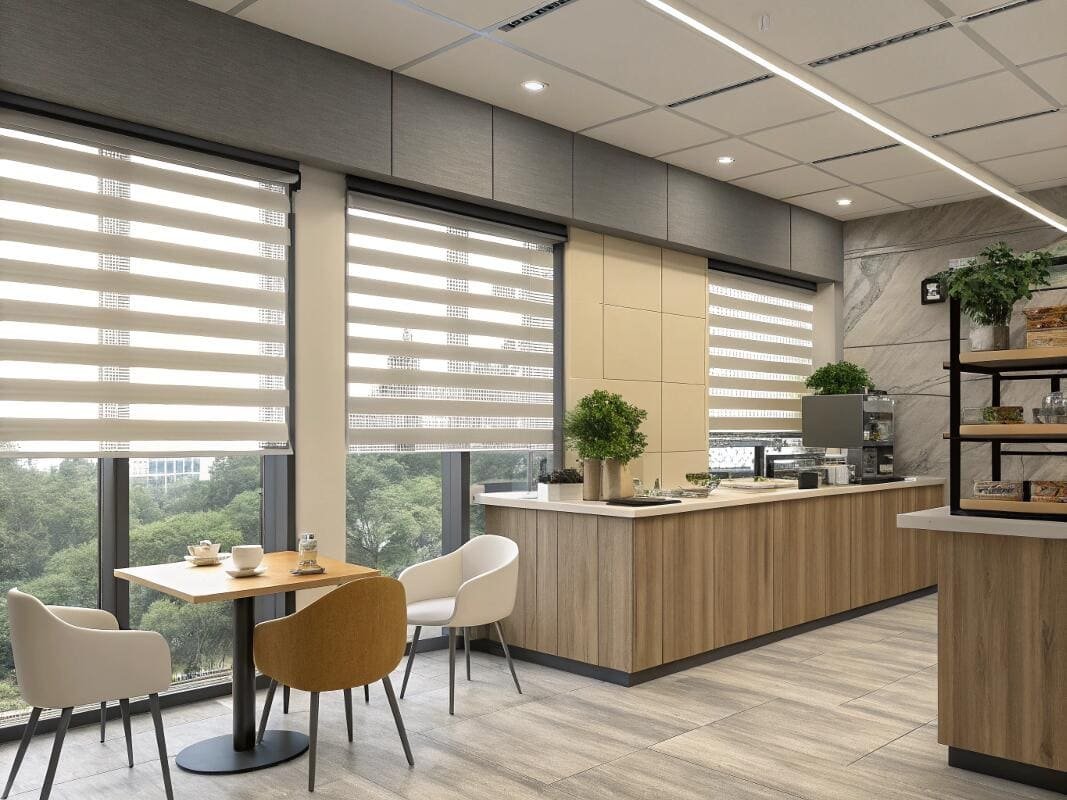
Acknowledging a product's limitations is key to building trust and ensuring client satisfaction. When I discuss zebra blinds, I address these two points head-on and explain how specific fabric and manufacturing choices turn these potential negatives into non-issues. It’s about specifying a solution, not just a product. The right material selection is a proactive strategy to mitigate future maintenance headaches and extend the product’s life.
Fabric-Based Solutions to Common Problems
-
The Problem: Dust Accumulation
The horizontal sheer fabric bands act like small shelves, catching airborne dust. This can make the blinds look dingy and increase the maintenance burden, especially in commercial environments. This was noted in my previous experiences, where cleaning between stripes was a moderate challenge.- The Fabric Solution: Specify a fabric with a dedicated anti-static coating. This invisible finish changes the fabric's surface charge, causing it to actively repel dust particles. This drastically reduces cleaning frequency from bi-weekly dusting to monthly maintenance.
-
The Problem: Edge Fraying
The solid vanes of zebra blinds are cut from a larger roll. With cheaper fabrics and basic cutting methods (like a simple pressure knife), the yarns at the edge are left exposed and can begin to unravel with repeated use, creating an unsightly, fuzzy appearance.- The Manufacturing Solution: Insist on fabrics that have been cut using ultrasonic or crush-cutting technology. Ultrasonic cutters use high-frequency vibrations to cut and simultaneously melt-seal the polyester fibers at the edge. This creates a clean, durable, and fray-proof bond that withstands years of operation.
By specifying these two features—anti-static coating and ultrasonic cutting—you are directly addressing the two most common long-term complaints about zebra blinds.
Can You Buy or Replace Blind Fabric Separately for Large Projects?
Facilities managers and long-term project planners often ask about end-of-life options. Can they just replace the fabric to match a new interior design without buying a whole new blind system?
Yes, for large-scale installations, fabric can be replaced on existing hardware. While buying raw fabric rolls is typically reserved for manufacturers, replacing the fabric on an existing blind is a cost-effective and sustainable way to update aesthetics or restore performance.
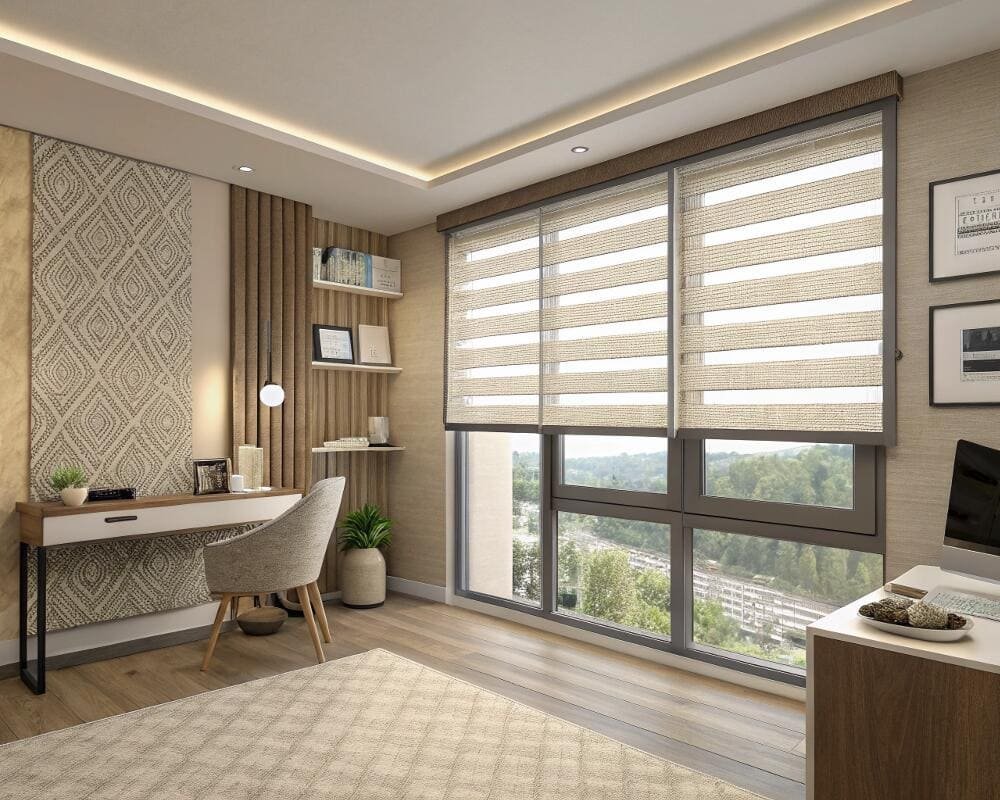
Thinking about the full product lifecycle is a mark of a savvy project buyer. The ability to refresh an installation without a complete rip-and-replace of hardware, motors, and controls offers significant long-term value. This is especially true for automated blinds, where the motor and control system represent a large portion of the initial cost. I often work with clients on multi-year building management plans where fabric retrofitting is a scheduled event, allowing them to adapt to changing design trends without breaking the bank.
Sourcing vs. Replacing Fabric
-
Buying Fabric Rolls Separately: This is generally not feasible for contractors or end-users. Fabric mills have large minimum order quantities (MOQs), often thousands of meters per color. You would also need specialized fabrication equipment to cut, bond, and attach the fabric to the roller system. This route is for blind manufacturers only.
-
Replacing Fabric on Existing Blinds (Retrofitting): This is a highly practical and increasingly popular service.
-
The Process: A technician removes the existing blind. The old fabric loop is carefully detached from the roller tube and the bottom rail. A new, custom-sized fabric loop is then installed onto the original hardware. The entire unit is then re-installed.
-
The Benefits:
- Cost Savings: Saves 40-60% of the cost of a new blind by reusing the cassette, motor, and control components.
- Sustainability: Drastically reduces landfill waste by extending the life of the most durable components.
- Design Flexibility: Allows for a complete aesthetic refresh every 5-10 years to keep the interior looking current.
-
Key Consideration: The weight of the new fabric must be compatible with the torque of the existing motor or the capacity of the clutch mechanism to ensure smooth operation.
-
Conclusion
The fabric is the heart of a zebra blind. Focusing on material quality, performance coatings, and manufacturing details is the most effective way to ensure long-term value, safety, and client satisfaction in any commercial project.
Get Your Project-Specific Fabric Analysis
Don't leave your next project's success to chance. Let's analyze your requirements and select the perfect fabric. We provide certified samples, technical data sheets, and project-specific quotes to ensure you specify with confidence.
Contact me with your project details at info@velablinds.com to receive tailored fabric solutions.
Extended FAQ Section
People also ask
Are zebra blinds good for blocking heat?
Zebra blinds offer moderate heat-blocking capabilities. Their dual-layer design creates an insulating air pocket between the fabric and the window when the solid vanes are closed, which can reduce some thermal transfer. However, their performance is not as high as dedicated cellular honeycomb shades or roller shades with a thermal backing. To maximize heat control with zebra blinds, select a fabric with a reflective or white backing on the solid vanes, as this will bounce more solar radiation away from the window.
What is NFPA 701 for blind fabrics?
NFPA 701 is a critical fire safety standard developed by the National Fire Protection Association in the United States. It establishes test methods to assess the flame propagation of textiles and films under fire conditions. For commercial spaces like offices, hotels, schools, and hospitals, building codes almost universally mandate that window coverings pass the NFPA 701 test. When you specify a fabric as "FR-rated" or "NFPA 701 compliant," it means the material has been certified to resist ignition and to self-extinguish once the flame source is removed, enhancing building safety.
How does fabric openness affect zebra blind privacy?
Fabric openness refers to the tightness of the weave in the sheer sections of the zebra blind fabric. A lower openness percentage (e.g., 1%) means a tighter weave with smaller holes, offering greater privacy and more light filtering. A higher openness factor (e.g., 5-10%) creates a more transparent sheer layer, providing a clearer view to the outside but less daytime privacy. For commercial spaces requiring a good balance, a 3% to 5% openness sheer is common. For more sensitive areas, choosing a fabric with a 1% openness factor or even a "privacy sheer" with a more obscure texture is recommended.
---
[^1]: Explore the differences to make informed choices that enhance durability and performance.
[^2]: Understanding the fabric selection process is crucial for ensuring quality and longevity in your projects.
[^3]: Discover how performance coatings can significantly improve the functionality of zebra blinds.
[^4]: Understanding the total cost of ownership helps in making cost-effective decisions for your projects.
[^5]: An anti-static coating can greatly reduce dust accumulation, making maintenance easier.Partner with VelaBlinds for Your Next Project
Smart window treatments shouldn't be complicated. After working with 500+ distributors and contractors worldwide, I've streamlined the process to get you quality products, competitive pricing, and reliable support - every time.
Why project professionals choose VelaBlinds:
- ✅ Fast, Accurate Quotes - Detailed specs and pricing within 24 hours
- ✅ Transparent Pricing - No hidden fees, volume discounts clearly outlined
- ✅ Quality Assurance - Direct partnerships with certified OEM manufacturers
- ✅ Project Support - Dedicated account manager from quote to delivery
Start your next project:
📧 Quick Quote: Send your requirements to info@velablinds.com
📱 Direct Contact: WhatsApp +86 137 2012 8317
🌐 Browse Solutions: https://velablinds.com/
📁 Product Resources: Access spec sheets, catalogs & project files
Jimmy Chen, Founder
"I built VelaBlinds to solve the real challenges I faced as a project buyer - long lead times, unclear specs, and unreliable suppliers. Let's discuss how we can power your projects with smarter blinds."
Serving distributors and contractors across North America, Europe, and Australia since 2018.



